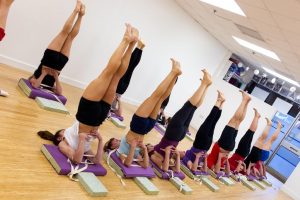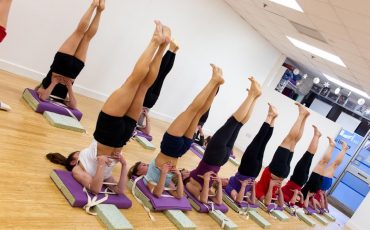 From adolescence through to motherhood, menopause, and old age, women undergo many life changes. Throughout, yoga helps women to strengthen both body and mind and create a state of balance and harmony.
From adolescence through to motherhood, menopause, and old age, women undergo many life changes. Throughout, yoga helps women to strengthen both body and mind and create a state of balance and harmony.
At each stage of a woman’s life, her body undergoes physical and psychological changes. The practice of yoga can be modified and adapted to suit her changing needs in each phase, helping her to achieve peace of mind and bodily poise.
From Childhood To Adolescence
In childhood, the practice of yoga is a playful one where new rhythmic and challenging movements are enjoyed. At adolescence, young girls undergo many changes in body and mind. This period of sudden change is an ideal time to begin the practice of yoga asanas and pranayama, both of which can help to maintain a healthy and regular menstrual cycle. The practice can be tailored to concentrate on poses that help to strengthen emotional stability, regulate mood swings, and avoid menstrual disorders. Yoga is also beneficial during this period of growth as it helps to develop muscular strength, avoid obesity, assist the development of the reproductive organs, and balance hormones.
Yoga From Conception To Motherhood
From pre-conception through to pregnancy and motherhood, maximizing physical and mental health is important. During this period, yoga can help to optimize reproductive health to improve the chances of conceiving and help a woman’s body cope with the demands of pregnancy and labor.
During pregnancy, yoga has many benefits and can be tailored to suit the body’s changing needs and capabilites. As well as helping to strengthen the uterine muscles and support the spine, enabling the back to cope with additional pressure, it also helps the body to deal with many of the health problems common to pregnancy, such as poor circulation, fluctuations in blood pressure, excess weight gain, fatigue, edema, and urinary problems.
Regular practice of the yoga asanas strengthens and prepares the body for the demands of labor, easing delivery. Beneficial poses in pregnancy include Utthita Trikonasana, Janu Sirsasana, and Bharadvajasana. The discipline involved in the asanas and the ability to achieve peace of mind enable the body to face the contractions with less anxiety and to relax and let go with greater ease in between each contraction. Regular yoga practice during pregnancy also speeds recovery and restores energy levels. After the delivery, the practice of pranayama, or yogic breathing, increases oxygen intake, helping to ensure a plentiful supply of milk.
A month or two after the birth, gentle practice can be resumed to restore firmness in the muscle fibers and encourage a continued supply of milk. During this period of recovery, the emphasis should be on recuperative poses, gradually building up to more active ones and, at around three months after the birth, normal yoga practice can be resumed.
Middle Age And Menopause
The benefits of yoga continue into middle age and beyond and are particularly beneficial during menopause. Occurring between the ages of 45 and 55, this is a period when hormonal changes can lead to mental instability and physical changes. Physical symptoms include hot flashes, high blood pressure, breast discomfort, headaches, obesity, and insomnia. The immune system may also weaken, with the body becoming more sensitive to colds and infections, particularly urinary ones. Other physical changes can include diabetes, the onset of osteoporosis, and a general slowing down. Feelings of anger, depression, anxiety, loss of self-esteem, and dissatisfaction are also common during this period of change.
The benefits of yoga during this time are substantial and regular practice helps to maintain physical, mental, and emotional health. Specifically, regular practice in menopause helps to balance hormones, keep weight under control, and maintain a healthy digestive system. Useful asanas during menopause include Prasarita Padottanasana, Supta Baddhakonasana, and Paschimottanasana. Props can be used to help the body adapt during this period of change and to regulate and balance hormonal activity.
Yoga In Old Age
The bodily transition from middle to old age brings with it many new challenges. Most notable is the increase in physical fraility brought about by conditions such as brittle bones, low metabolism, poor circulation, absent-mindedness, and a general lack of coordination.
At this stage, a great deal of modification is required and props are a great help, enabling poses to be achieved with less effort, which in turn helps to maintain blood circulation and a healthy nervous system. The use of props also allows the body to both extend and fully relax. The aim of yoga at this stage, as always, is to maintain both physical and mental health, therefore bringing about balance and harmony. In old age, this is achieved by adapting the practice and adopting new methods with which to achieve poise and stability in the asanas. With continuity, the practice of yoga matures and women learn how to accommodate the physical limitations brought about by increasing age.
Yoga For Life
At each stage of a woman’s life, an awareness of the modifications necessary to achieve balance in the poses, together with judgement and an intelligent application of the sequence and duration of the asanas are all important factors. Regular practice under the guidance of a qualified and experienced teacher can help to achieve this awareness and ensure that yoga becomes both an enriching and integral part of life.

Leave a Reply